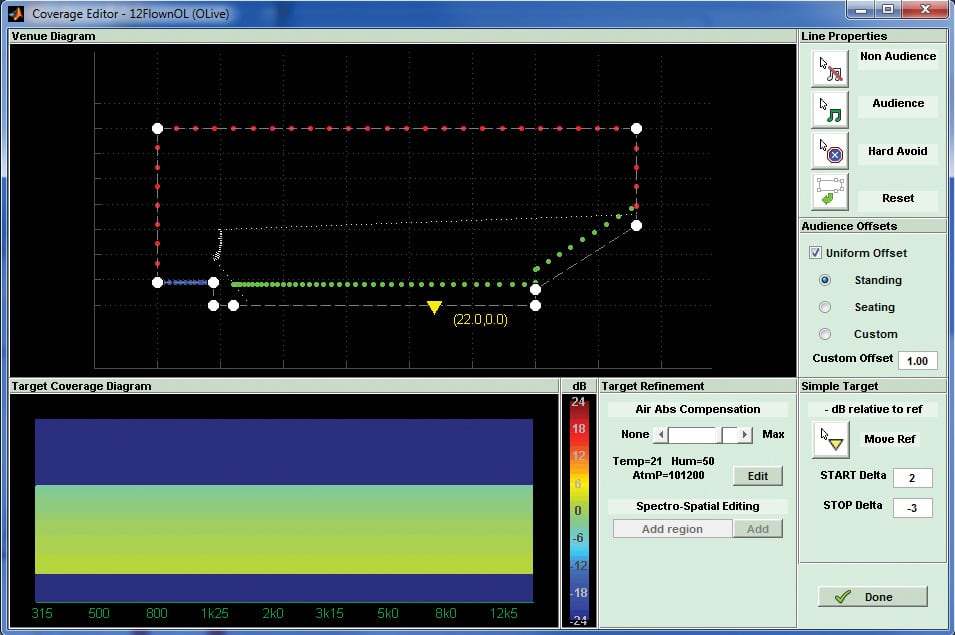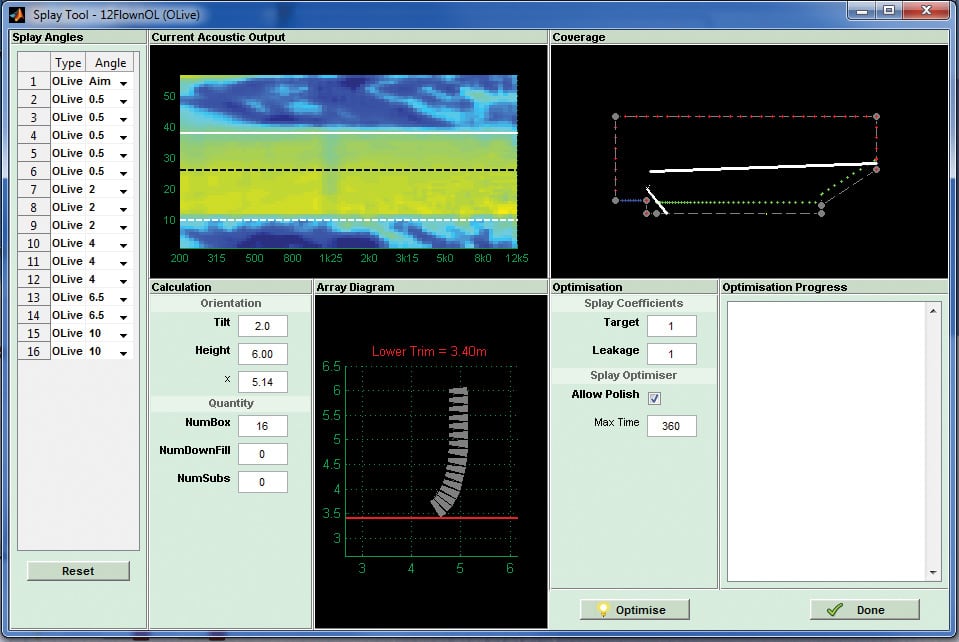In its standard set up with uniform amplification, it is the articulation of individual array modules that delivers the consistent sound coverage over a defined area.
The array configuration for a specific area is determined by industry leading optimisation software which makes intelligent judgements about how well the array performs against objective target functions. This enables focused sound energy to be delivered precisely where needed and kept away from reflective surfaces and ceilings — reducing the detrimental influence of the room and increasing clarity and intelligibility in challenging acoustic environments.

Step 1: Venue entry

Step 2: Set coverage parameters

Step 3: Calculate splay angles

Step 4: Optimisation and upload
This can now be taken further with DSP optimisation delivered via DISPLAY and the use of either iK81 amplifier or a VIA2004 amplifier with a DX4.0 controller, to independently control and power each individual enclosure, or groups of enclosures.
This unlocks the full potential of O-Line — further refining coverage consistency and increasing the ability to ‘dial-out’ the influence of the room by accessing DISPLAY’s ‘hard avoid’ capability and electronically adjustable coverage
This can also enable additional benefits to any installation. More often than not, many installations can suffer from height restrictions and the combination of both mechanical and DSP optimisation can compensate this challenge. Similarly, some installations require a flatter array for aesthetic reasons and so additional DSP optimisation can compensate for the lack of mechanical optimisation available. There is also the scenario that following an installation something changes in the venue and rather than have to de-rig and re-rig, electronic optimisation alone can provide a level of coverage change. Similarly, it maybe that the venue is multi-purpose with changing sizes of audience and so by using DISPLAY with VU-NET control it’s possible to have different pre-sets to cater for these coverage changes.